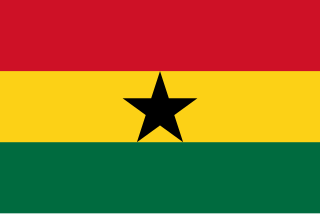 W
WGhana is a country of 28.21 million people and many native groups, such as:the Akans in the centre and South of the country the Ga and Adangbe in, around and East of Accra the Guang peoples in the rain forest the Dagombas, Mamprusi and related peoples in the North the Gurunsi languages speaking peoples in the far North the Gonjas in the Northern Region
 W
WAdinkra are symbols from Ghana that represent concepts or aphorisms. Adinkra are used extensively in fabrics, logos and pottery. They are incorporated into walls and other architectural features. Fabric adinkra ary woodcut sign writing as well as screen printing. Adinkra symbols appear on some traditional Akan goldweights. The symbols are also carved on stools for domestic and ritual use. Tourism has led to new departures in the use of the symbols in such items as T-shirts and jewellery.
 W
WAdowa is a dance by the Akan people of Ghana. It is a popular traditional dance in Ghana and it is performed at cultural ceremonies like festivals, funerals, engagements, and celebrations. The Adowa dance is a sign of expression that allows performers to communicate their emotions and feelings through their hands and feet. There are different hand movements performed for each setting, people will communicate positive emotions at weddings or engagements and negative emotions at funerals.
 W
WAkan art is an art form that originated among the Akan people of West Africa. Akan art is known for vibrant artistic traditions, including textiles, sculpture, Akan goldweights, as well as gold and silver jewelry. The Akan people are known for their strong connection between visual and verbal expressions and a distinctive blending of art and philosophy. Akan culture values gold above all other metals, so the artwork and jewelry made of gold reflects a great deal of value, whether it be made for appearance, artistic expression, or more practical trading purposes.
 W
WIn many parts of West Africa, there is an old chieftaincy tradition, and the Akan people have developed their own hierarchy, which exists alongside the democratic structure of the country. The Akan word for the ruler or one of his various courtiers is "Nana". In colonial times, Europeans translated it as "chief", but that is not an exact equivalent. Other sources speak of "kings", which is also not entirely correct, especially in the case of the said courtiers. The term "chief" has become common even among modern Ghanaians, though it would be more correct to use the expression "Nana" without translation wherever possible.
 W
WAkan goldweights,, are weights made of brass used as a measuring system by the Akan people of West Africa, particularly for wei and fair-trade arrangements with one another. The status of a man increased significantly if he owned a complete set of weights. Complete small sets of weights were gifts to newly wedded men. This insured that he would be able to enter the merchant trade respectably and successfully.
 W
WAkua'ba are wooden ritual fertility dolls from Southern Ghana and nearby areas. The best known akua'ba are those of the Fanti people, “Fanti Dolls” whose akua'ba have large, disc-like heads. Other tribes in the West Africa region have their own distinctive style of akua'ba.
 W
WAnansi is an Akan folktale character. He often takes the shape of a spider and is sometimes considered to be a god of all knowledge of stories. Taking the role of trickster, he is also one of the most important characters of West African, African American and Caribbean folklore. Originating in West Africa, these spider tales were transmitted to the Caribbean by way of the transatlantic slave trade. Anansi is most well known for his ability to outsmart and triumph over more powerful opponents through his use of cunning, creativity and wit. Despite taking on the role of the trickster, Anansi's actions and parables often carry him as protagonist due to his ability to transform his apparent weaknesses into virtues. He is among several West African tricksters including Br'er Rabbit and Leuk Rabbit.
 W
WThe Asanka, earthenware dish, is a Ghanaian grinding pot that is made out of clay with ridges inside. It comes with a wooden masher called eta or tapoli in the local language. It is commonly referred to as traditional blender and appropriately used where there is no electricity. It is also called a 'pounding pot.' The Ga' s call it Kaa whiles the Akans call it apotoyewaa or Asanka. It is commonly used in the chop bars as serving bowls.
 W
WDancing Pallbearers, also known by a variety of names, including Dancing Coffin, Coffin Dancers, and the Coffin Dance Meme are a Ghanaian group of pallbearers who are based in the coastal town of Prampram in the Greater Accra Region of southern Ghana, although they perform across the country as well as internationally. The founder and leader of the group is Benjamin Aidoo. They are locally referred to as Nana Otafrija Pallbearing and Waiting Service or Dada awu.
 W
We.tv Ghana also known as ETV Ghana is a free-to-air terrestrial television network broadcasting 24-hours a day from Accra since its launch in October 2009. As of December 2011 it will also commence terrestrial transmissions in Kumasi. Beyond Accra and Kumasi, it is available via satellite on First Digital TV and SMART TV. It is privately owned TV in Accra.
 W
WThe fantasy or figurative coffins from Ghana, in Africa also called custom, fantastic, or proverbial coffins, are functional coffins made by specialized carpenters in the Greater Accra Region in Ghana. These colourful objects which have developed out of the figurative palanquins are not only coffins, but considered real works of art, were shown for the first time to a wider Western public in the exhibition Les Magiciens de la terre at the Musée National d'Art Moderne in Paris in 1989. The seven coffins which were exposed in Paris were done by Kane Kwei (1922–1992) and by his former assistant Paa Joe (b.1947). Since then, these art coffins of Kane Kwei, his grandson Eric Adjetey Anang, Paa Joe, Daniel Mensah (Hello), Kudjoe Affutu and other artists have been displayed in many international art museums and galleries around the world.
 W
WA figurative palanquin connected with the totem of its owner is a special kind of litter used in the Greater Accra Region in Ghana. These palanquins called in the Ga language okadi akpakai belong to the royal insignias and are used only by the Ga kings or mantsemei and their sub-chiefs when they are carried in public at durbars and festivals like Homowo. With these figurative palanquins the Ga create ethnic differences between themselves and their Akan neighbours that only use simple boat- or chair-shaped litters.
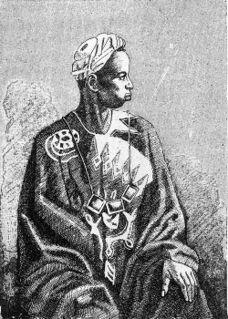 W
WA griot is a West African historian, storyteller, praise singer, poet, or musician. The griot is a repository of oral tradition and is often seen as a leader due to their position as an advisor to royal personages. As a result of the former of these two functions, they are sometimes called a bard.
 W
WHomowo is a harvest festival celebrated by the Ga people of Ghana. The festival starts in the month of early June and August
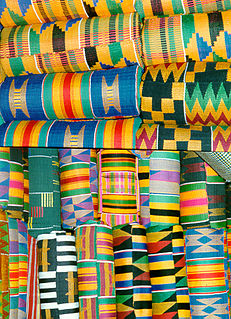 W
WKente, refers to a Ghanaian textile, made of handwoven cloth strips of silk and cotton. Historically the fabric was worn in a toga-like fashion by royalty among ethnic groups such as the Ashanti and Ewe in modern day Ghana, the wearing of Kente cloth has become widespread to commemorate special occasions, with highly sought after Kente brands led by master weavers.
 W
WNungua is a town in Krowor Municipal District in the Greater Accra Region of southeastern Ghana near the coast. Nungua is the eighteenth most populous settlement in Ghana, in terms of population, with a population of 84,119 people.
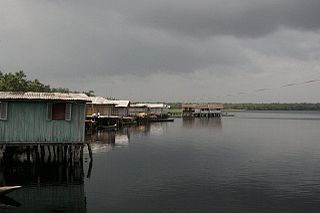 W
WNzulezo is a village located near the village of Beyin, 90 kilometers west of Takoradi, in the Jomoro District jomoro the Western Region of Ghana.
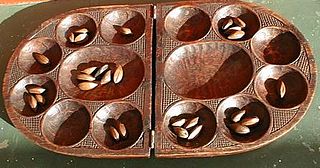 W
WOware is an abstract strategy game among the Mancala family of board games played worldwide with slight variations as to the layout of the game, number of players and strategy of play. Its origin is uncertain but it is widely believed to be of Ashanti origin.
 W
WQueen mothers are leaders and women of power in Africa. There is no general description of a queen mother. Generally, queen mothers play an important role in local government and "wield social power and influence." The amount of power they currently hold has been diminished since pre-colonial times.
 W
WIn general, Ghanaians emphasize communal values such as family, the importance of dignity, and proper social conduct.
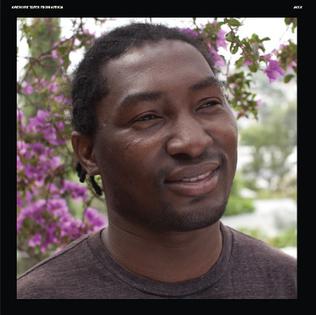 W
WSongs of Paapieye is the fourth album by Ghanaian musician SK Kakraba, released in October 2015 by Awesome Tapes From Africa, becoming the first album of original material released by the typically reissue-centred label. The album showcases Kakraba's mastery of the gyil, a type of wooden, 14-slatted xylophone originating from Kakraba's native Ghana that features a distinctive, buzzy rattle with a slow decaying sound caused by spiders egg sac silk walls pulled across the gourds' holes, known in Kakraba's Lobi language as pappieye, which gives the album its name. It is smoother in sound than his previous album Yonye and is fast-paced, showcasing complex, intricate rhythms, drones and dialogue between lower, buzzing basslines and higher, syncopated notes. Many tracks feature several modes and move between different sections.
 W
WThe traditional Ghanaian stool is a carved wooden stool common in sub-SaharanWest Africa, and especially common in Ghana. Among the Akan it is used as a household object, it is used in rites of passage, and is considered sacred.
 W
WWitchcraft is deeply rooted in many African countries and communities in Sub-Saharan Africa. It has been specifically relevant in Ghana's culture, beliefs, and lifestyle and continues to shape lives on the daily. It has promoted tradition, fear, violence, and spiritual beliefs. The perceptions on witchcraft change from region to region within Ghana as it does in other countries in Africa, with the commonality that it is not something to take lightly and the word spreading fast if there are rumors surrounding civilians practicing it. The actions taken by local citizens and the government towards witchcraft and violence related to it has also varied within regions in Ghana. Traditional African religions have depicted the universe as a multitude of spirits that are able to be used for either good or evil through religion. Witchcraft beliefs are deeply rooted in Ghanaian culture and can be traced back to hundreds of years before colonial powers in the country were even present. Today it continues to influence actions and lifestyle through accusations and fear behind witchcraft. Accusations against women and violence are common with the topic of witchcraft, many of them ending in murder and public killings. Witchcraft is observed through numerous lenses varying from local Ghana to how the Western world views the subject and researches it from the action itself to its political undertones and actions surrounding the topic.